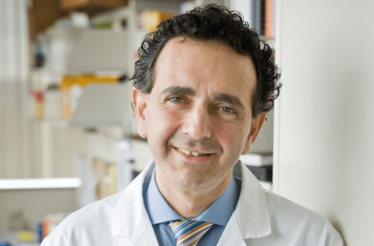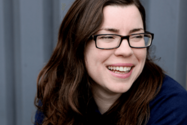The Organ Grower
Sitting Down With... Anthony Atala, Director, Wake Forest Institute for Regenerative Medicine, Winston-Salem, North Carolina, USA.

What attracted you to medicine as a career?
When I was a child, my family still had a traditional family doctor. He would make house calls when one of us was sick, and check up on the rest of us at the same time. Those childhood memories of the doctor looking after not just the patient but also the family as a whole made me want to do the same. I still see patients and carry out surgery alongside my research activities.
Does being a practicing surgeon help your research?
Definitely. It keeps me close to the patient and their needs, and inspires me to work even harder to find better solutions. During my medical training, I actually had no intention of doing research – I became a clinician–researcher through serendipity. I applied for a training program at Children’s Hospital at Harvard Medical School, where they had recently added an optional research component. They gave me the choice of following a straightforward clinical track or gaining a combination of clinical and research experience. I just wanted to be a surgeon, but somehow Dr Alan Retik, the program Chair, convinced me that I should try the research track. Of course, once I got started in research, I loved it.
What changed your mind?
At that time, the research lab was just being set up, so I had greater freedom to do what I wanted – and that was to try growing human tissue. Tissue engineering was in its infancy, but there was definitely a clinical need in my specialty and I was drawn in by the potential.
You were in the vanguard of the field?
It was the earlier days of the field. The term ‘regenerative medicine’ hadn’t even been coined. There were many challenges back then – first and foremost, the fact that most normal human cells could not be grown outside the body. It took years just to find the right combination of factors to successfully culture urinary tract cells.
Another challenge was developing biomaterials that would allow these cells to be used in patients – the scaffolds on which the cells can grow. Also challenging was creating vasculature within tissues, so that the tissues would survive after implantation. It took a lot of work but by the late 1990s we were implanting lab-grown bladders into patients for the first time.
How did it feel to break new ground?
It made us feel very anxious to know that such a procedure had not been attempted before. You can do as many pre-clinical trials as you want, and you have to show safety and efficacy in these, but eventually you have to try it in a patient. It was a learning process as we kept implanting these organs. We’re now getting ready to start on Phase III clinical trials.
Starting with a complex organ such as the bladder, a hollow non-tubular organ, allowed us to be more ambitious in later trials – it was relatively easy to expand to simpler flat or tubular structures, such as skin or blood vessels, as we’d already solved a lot of the design challenges.
Regenerative medicine has attracted a lot of hype. How does that influence your work?
Hype is not unique to regenerative medicine by any means; when any scientific breakthrough is made, people tend to get carried away and think it will be available to patients in a year or two. Of course, we all know that in any area of science that is not the case, so we must remain grounded. Scientific discoveries take time to transition into therapies, and therapies take time to be regulated and tested. As someone who has been involved in translation at both the basic science and the clinical end of the spectrum, I think education is very important. We have to strike a balance; we want to be enthusiastic enough to be able to push for the development of technologies that have a potential clinical benefit, but temper these expectations when it comes to their ultimate success and timelines.
In our clinical trials, we always waited until we had completed five years of follow up, and always on a series of patients – not single case reports – before we published the outcomes. This allowed us to know that the technology was sound and effective long term before the results were released publicly.
But you must be excited about the future?
Absolutely. There have been many advances over the last several decades. At one point, the field was considered science fiction. People really thought that it was impossible to create tissues or organs out of cultured cells. Now, it’s science fact – not only is it possible, it’s also reproducible. Engineered tissues and organs have been used in centers around the world, and patients have been able to benefit.
Here at Wake Forest, we’re working on about 30 different tissues right now, 25 percent of which have already reached patients. Our goal is to push up that percentage and ultimately help more patients with these technologies. There’s still a lot of work that needs to be done, but I remain optimistic about the outcome for our field.

“As Editor of The Translational Scientist, I’m working closely with our audience to create vibrant, engaging content that reflects the hard work and passion that goes into bringing new medicines to market. I got my start in biomedical publishing as a commissioning editor for healthcare journals and have spent my career covering everything from early-stage research to clinical medicine, so I know my way around. And I can’t think of a more interesting, challenging or important area to be working in.”















